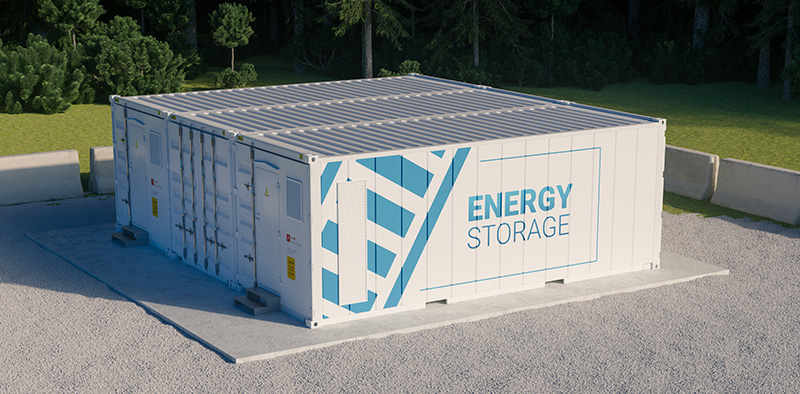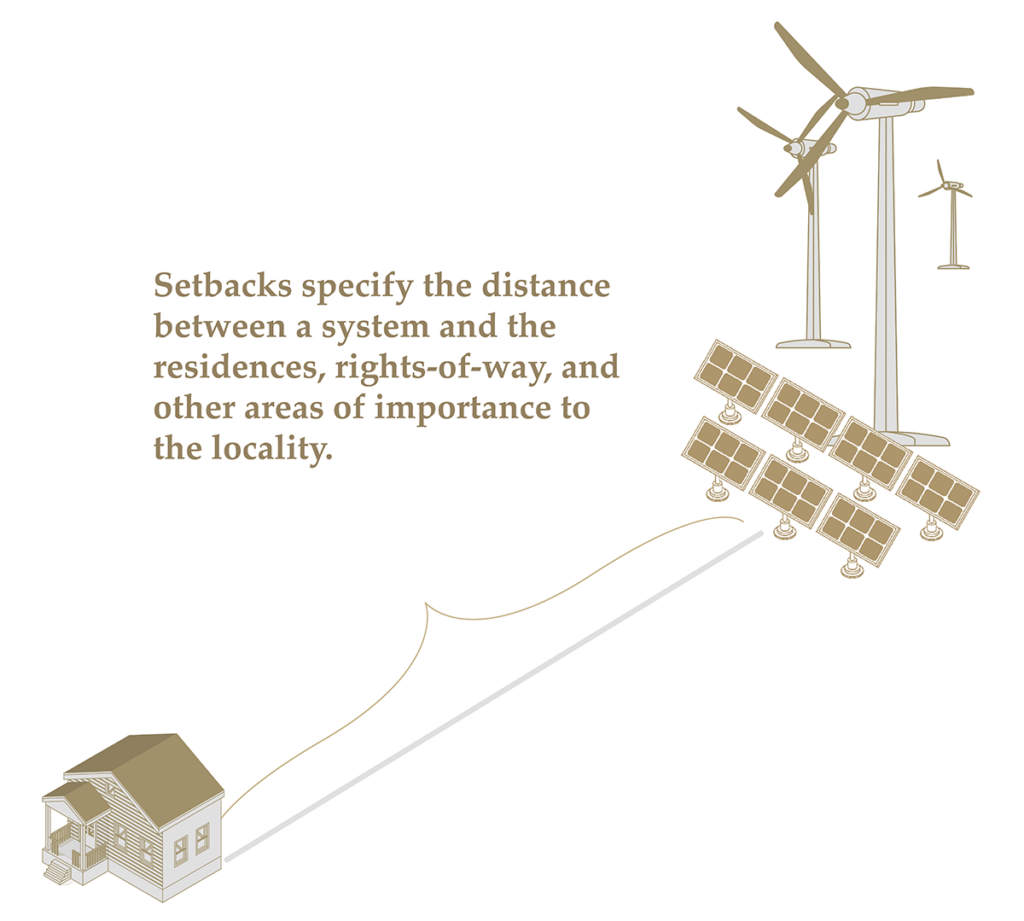

As policymakers consider renewable energy projects, the success of these initiatives often hinges on the thoughtful consideration of setbacks, which are essential for integrating these projects within local communities and environments. Setbacks specify the distance between a system and the residences, rights-of-way, and other areas of importance to the locality. Here are eight top considerations for counties that reflect the positive aspects of thoughtful setback planning for renewable energy projects:
1.
Promoting Community Engagement, Education and Support
One of the more positive aspects of including setbacks is the opportunity to engage with and educate, ultimately earning the community’s support. By actively involving residents in the decision-making process, helping them to understand the purpose behind setbacks and the expert guidance, counties can foster a sense of ownership and enthusiasm for renewable energy projects. This participatory approach ensures that setbacks are not just regulatory requirements but also reflect the community’s values and needs, leading to more successful and accepted projects.
2.
Respecting Property Rights
Good policy should include reasonable, balanced setbacks. Without being overly prescriptive – since all communities, counties and states are different – we recommend that policymakers consider setback provisions from existing ordinances and best practices that balance the needs of the landowners – both participating and non-participating – and the surrounding community. When considering the broader community, the property rights of the leasing landowner must be paramount.
3.
Larger Setbacks Take More Land Out of Use
Larger setbacks beyond those necessary to reflect the property rights and safety needs of neighboring non-participating landowners remove even more land from productive agricultural use, which some find to be counterproductive. Reasonable setbacks allow for the most efficient project area and for landowners to utilize their land for what they determine is most productive.
4.
Setbacks Should be Measured to the Dwelling Unit
When considering where to measure a setback from, the best practice is to measure from the nearest point of a system to the primary dwelling unit on the property. This measurement allows for an appropriate distance from the system to where the neighboring property owner lives. It also provides greater flexibility for project placement, increasing efficiency and limiting land taken out of agricultural production.
5.
Ensuring Public Health and Safety
The consideration of health and safety in planning setbacks is fundamental. It shows a local government’s dedication to the well-being of its citizens. Proper setbacks minimize risks associated with damage, sound, shadow flicker, and other potential considerations, ensuring that renewable energy projects are safe for neighbors and the larger community. This approach strengthens community trust and support for renewable energy initiatives.
6.
Integrating with Local Infrastructure
Setbacks are a tool for seamlessly integrating renewable energy projects into existing infrastructure. Thoughtful integration can enhance the efficiency of the renewable project and the local utility system, leading to more resilient and sustainable communities. By considering access to roads and utilities in setback planning, counties can facilitate smoother operations and maintenance, contributing to the project’s long-term success.
7.
Preserving Aesthetic and Cultural Values
Counties can use setbacks to maintain their landscapes’ aesthetic beauty and cultural significance. Renewable energy installations can coexist with cultural and natural heritage by setting projects back from key viewsheds, historical sites, and recreational areas. This approach ensures that the transition to renewable energy does not come at the cost of what makes a community unique. Appropriate setbacks will ensure projects can coexist with existing community and environmental sites rather than restrict entirely the ability to build a renewable energy project.
8.
Allowing for Waivers
It is important for the policymakers to work with all stakeholders to establish guidelines and regulations for various setbacks. However, local landowners may want to allow a smaller (or request a larger) setback for a variety of reasons than what the ordinance prescribes. Allowing for, but not requiring, negotiation between a developer and landowner is important to preserve property rights and project flexibility.
The thoughtful consideration of setbacks for renewable energy projects represents a proactive approach to community planning and environmental protection. It enables local communities to harness the benefits of renewable energy while ensuring that projects are developed in harmony with local needs, values, and the natural environment. Setbacks can play a pivotal role in the successful and positive integration of renewable energy into our communities.
We encourage policymakers to explore the many ordinances on our website to see how other communities have applied these principles.

We’d really appreciate it if you could take a moment to let us know what type of content you are most interested in.
By providing my mobile number I consent to receive informational text messages from The Center. Message frequency may vary. Msg & Data rates may apply. Text STOP to opt-out. Text HELP for help. For additional information, please see our Terms & Conditions and Privacy Policies.
Now you can download the document.
Now you can download the documents.
Now you can download the documents.